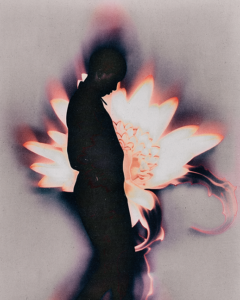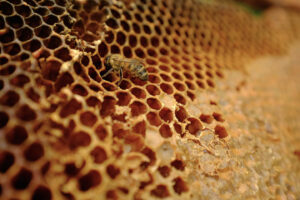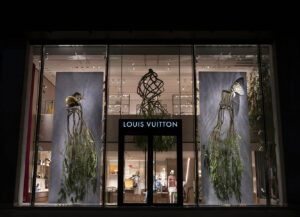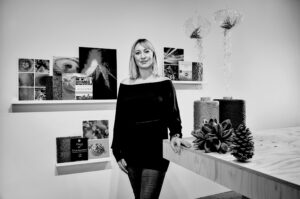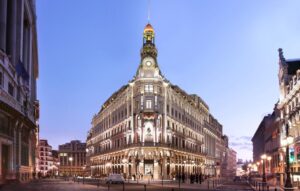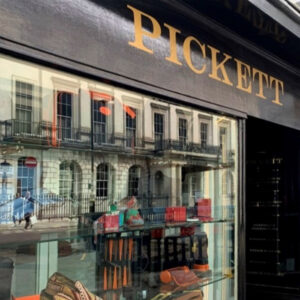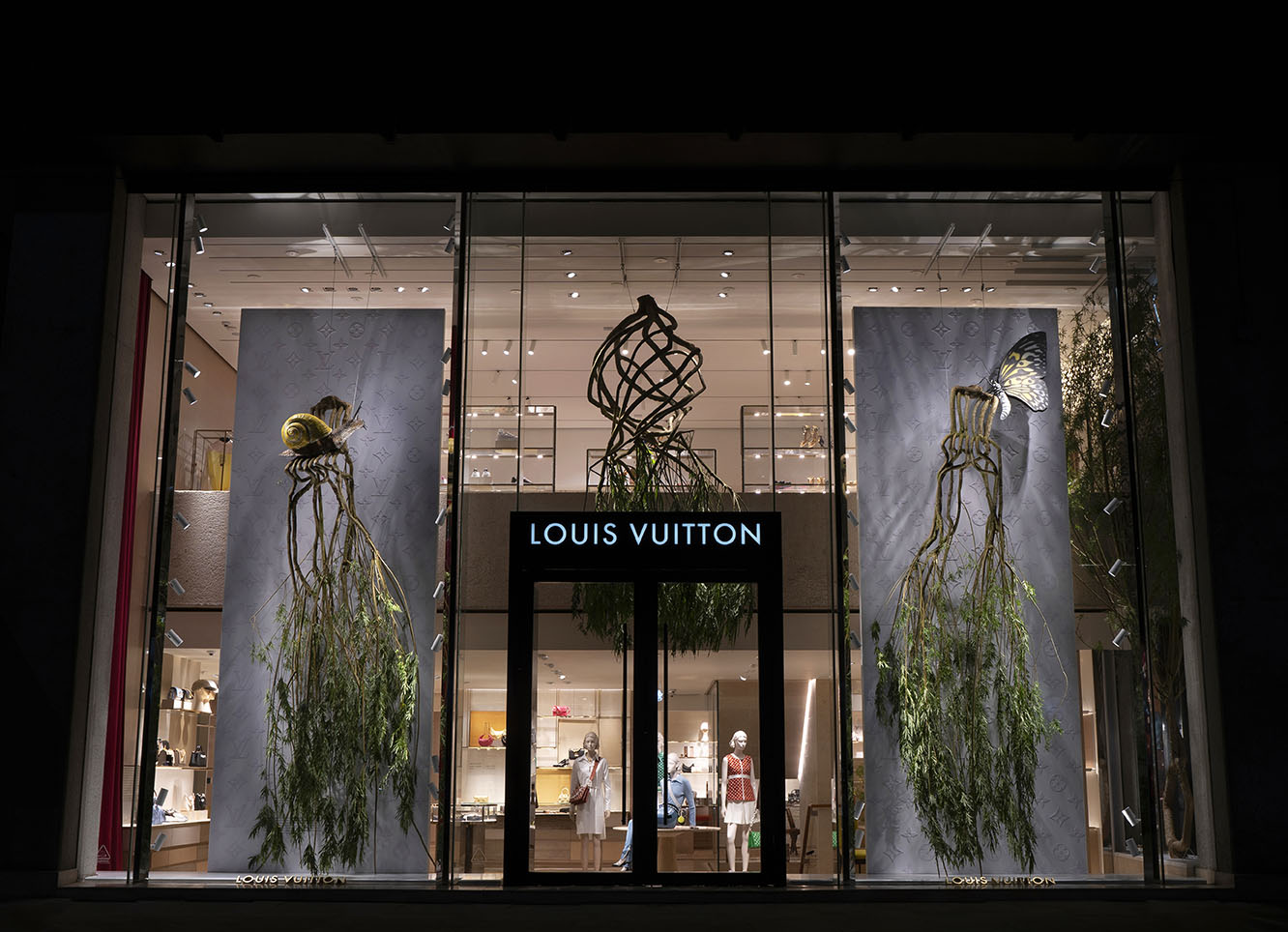
Full Grown chairs on display in the Louis Vuitton store, London, courtesy of Robert Astley-Spark.
Introducing the second interview in Unity of Nature, a captivating new interview series that delves into the cutting edge of nature-inspired art and design. Hosted by acclaimed design scientist Dr. Melissa Sterry, and sponsored by bio-innovation consultancy Bioratorium®, this series spotlights both emerging and established creative talents that are collaborating with living organisms like fungi, lichen, algae and trees to craft groundbreaking works that blur the lines between art, science, and sustainability. Each interview offers a fascinating glimpse into how nature can inspire bold, innovative solutions to the great environmental and social challenges of our time. Welcome to a world where art and design come alive.
Q&A with Alice and Gavin Munro of Full Grown
We’re delighted to present an exclusive interview with Alice and Gavin Munro, the visionary minds behind Full Grown, a groundbreaking project that redefines furniture design. Hosted by design scientist Dr. Melissa Sterry, this conversation explores how Full Grown turns the act of growing trees into a sustainable art form, creating exquisite, one-of-a-kind furniture directly from their orchard. Delving into themes of patience, craftsmanship, and ecological harmony, Alice and Gavin share their journey, from the inception of their Chair Orchard to collaborating with nature’s rhythms to working with working leading luxury brands. Join us as we uncover their inspiring mission to revolutionise design while fostering a regenerative future.
FULL GROWN LITERALLY GROWS FURNITURE IN AN ORCHARD. HOW AND WHEN DID THE IDEA COME TO LIFE?
The concept behind Full Grown began in 2006 as a response to a profound question: “Can we thrive by collaborating with Nature?” This journey started with a simple experiment in British woodland, where we planted our first saplings. Initially, we were searching for a subtle, efficient way to make durable furniture. However, this exploration gradually transformed into a complete re-evaluation of design, manufacturing, and our relationship with nature. Today, Full Grown’s Chair Orchard demonstrates an innovative vision of “growing” furniture in harmony with nature, offering a pioneering approach that challenges conventional manufacturing and invites us to reconsider how we create, live, and connect with our planet.
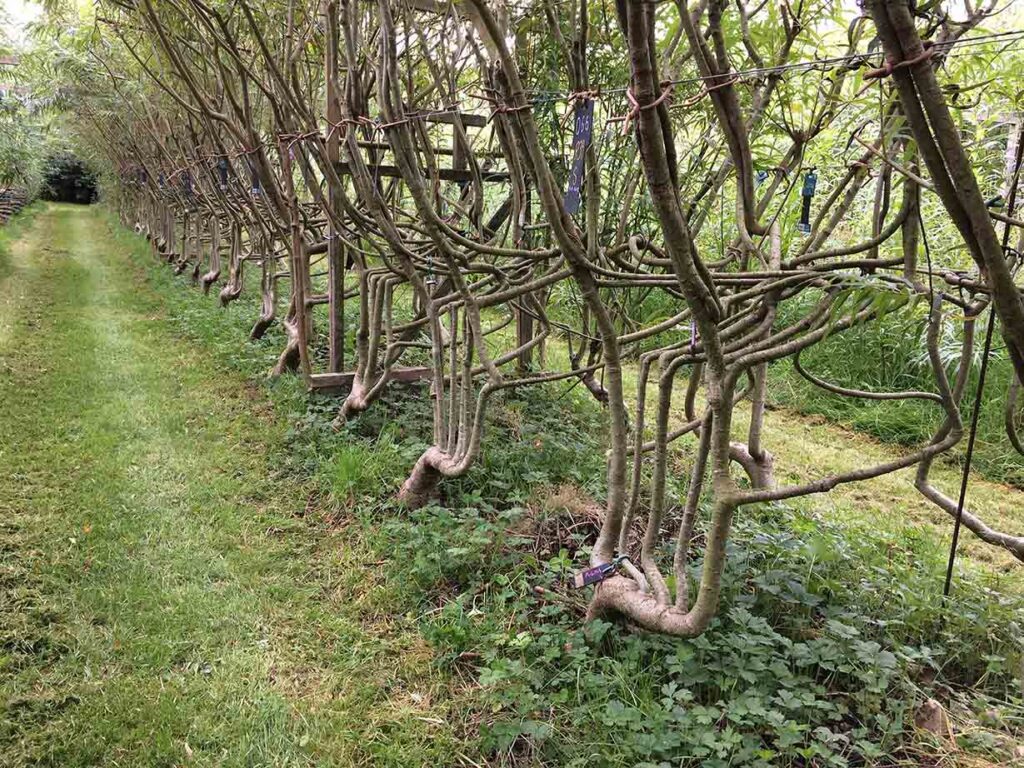
AS A PROCESS, GROWING FURNITURE IS FUNDAMENTALLY DIFFERENT FROM MAKING IT. WHAT HAVE BEEN THE BIGGEST CHALLENGES OF EMBRACING THIS ALTERNATIVE APPROACH?
Growing furniture rather than making it has required us to adopt a mindset that blends precision with patience and collaboration with natural systems. One of the core challenges is embracing the unpredictable nature of living trees, which grow at their own pace and in unique forms. Unlike traditional manufacturing, this process requires a deep understanding of each tree’s needs and a willingness to work within those natural constraints. Balancing artistic vision, functionality, and environmental considerations adds complexity, yet it is precisely this challenge that enables us to create truly one-of-a-kind, sustainable works of art.
CAN YOU WALK US THROUGH THE PROCESS OF GROWING A PIECE OF FURNITURE? HOW DO YOU GUIDE A TREE’S GROWTH, AND WHAT TOOLS OR METHODS DO YOU USE?
The process begins with carefully planting saplings in our Chair Orchard. Over several years, we guide the growth of these trees by using frameworks and moulds that gently shape branches into functional forms. We monitor each tree’s development, ensuring that the growth remains healthy and aligned with our designs. This involves pruning, adjusting the supports, and allowing nature to shape each piece in its unique way. It’s an organic, hands-on process that requires expertise, patience, and respect for each tree’s natural rhythm.
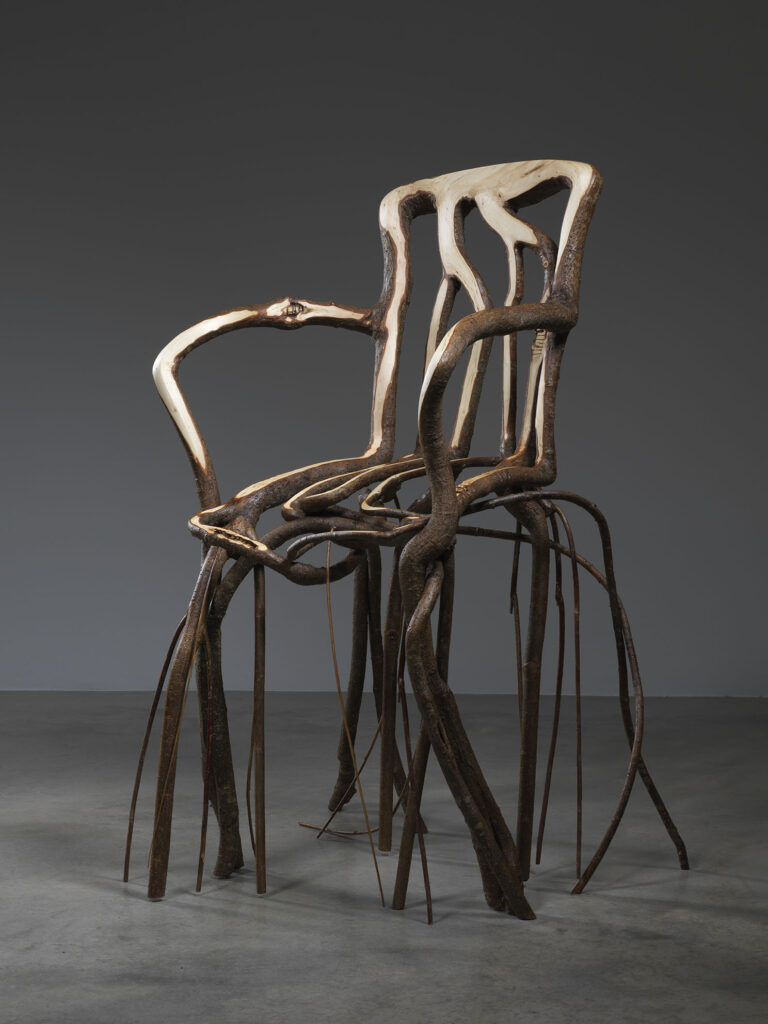
HOW MUCH CONTROL DO YOU HAVE OVER THE FINAL FORM AND AESTHETICS OF EACH PIECE? ARE THERE ELEMENTS OF SURPRISE IN THE FINAL DESIGN, OR IS EVERYTHING PLANNED DOWN TO THE LAST BRANCH?
While we can guide the general structure of each piece, there is always an element of surprise due to the organic nature of growth. Each tree responds to shaping in its own way, influenced by factors like sunlight, soil, and seasonality. While we work with precise frameworks, we welcome these unique variations, allowing the natural artistry of the tree to shine through. This approach ensures that every piece is distinctive—a collaboration between human vision and the tree’s innate tendencies, creating an unparalleled result.
TREES ARE LIVING ORGANISMS THAT NATURALLY GROW IN UNPREDICTABLE WAYS. HOW DO YOU STRIKE A BALANCE BETWEEN NATURAL GROWTH AND THE PRECISION NEEDED TO CREATE FUNCTIONAL PIECES OF FURNITURE?
Striking this balance requires patience, expertise, and an intimate understanding of each tree’s growth patterns. By working closely with arborists and applying gentle shaping techniques, we encourage natural forms while still achieving functionality. It’s a delicate dance where we respect each tree’s individual characteristics and adapt our approach to nurture rather than impose. This philosophy is central to Full Grown, as it emphasises collaboration with nature rather than domination over it.
HOW LONG DOES IT TYPICALLY TAKE FOR A PIECE OF FURNITURE TO BE FULLY GROWN, AND HOW DOES THIS INFLUENCE HOW YOU RUN FULL GROWN?
Growing a piece of furniture can take anywhere from 8 to 15 years, depending on the complexity of the design and the tree’s growth rate. This timeline means that Full Grown operates on a long-term vision, investing in sustainability and artistry rather than rapid production. The extended cultivation period influences our business model by prioritising exclusivity and creating an art piece that reflects the patience of nature. This long growth period is why Full Grown furniture remains both rare and valuable.
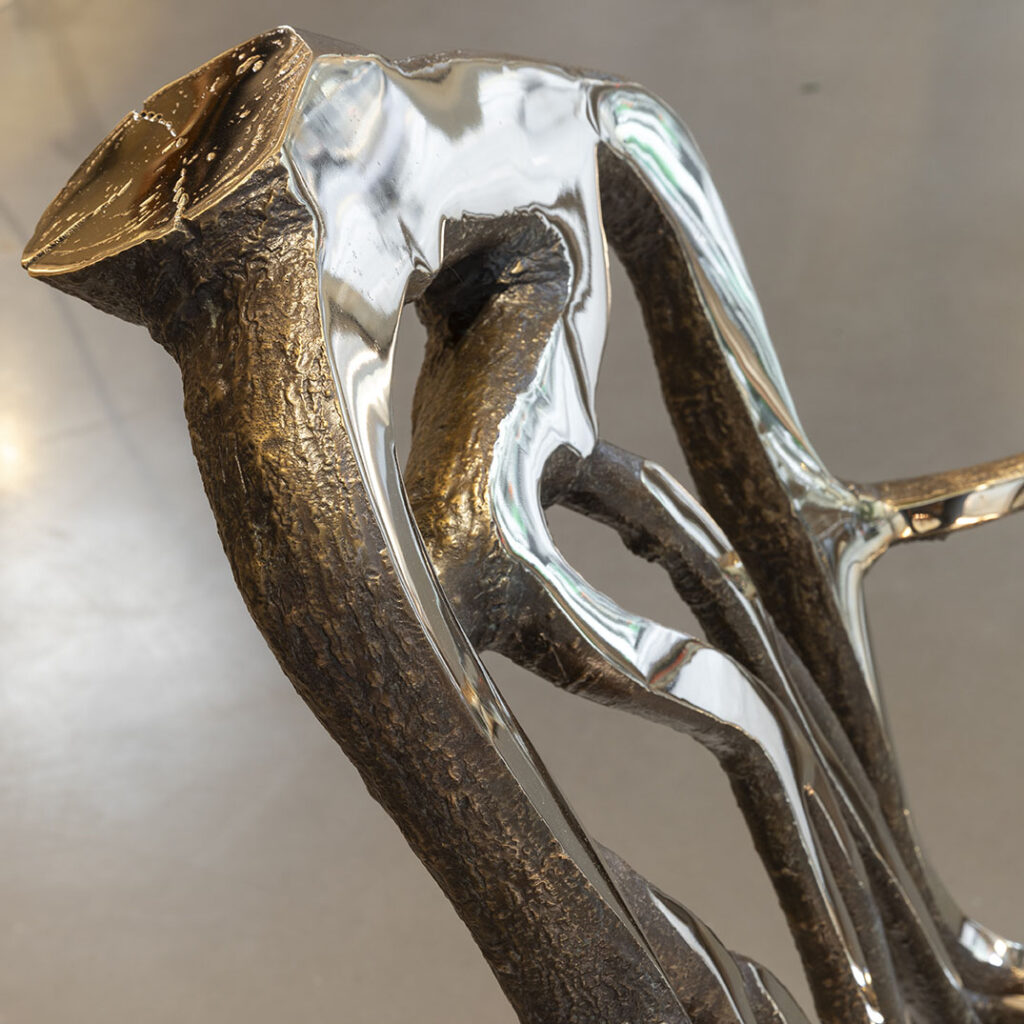
WHAT DESIGN PHILOSOPHIES INFLUENCE YOUR CREATIONS? DO YOU DRAW FROM TRADITIONAL FURNITURE-MAKING TECHNIQUES, NATURE’S INHERENT PATTERNS, OR OTHER DESIGN DISCIPLINES?
Our designs are inspired by the ancient principles of durability, functionality, and beauty as set forth by Vitruvius, the Roman architect. We view our work as a synthesis of these values, blending traditional craftsmanship with natural growth patterns. Nature’s organic forms guide our designs, but we also incorporate insights from disciplines like sculpture, environmental design, and botanical science. This interdisciplinary approach allows us to create furniture that is not only functional but also a living testament to the beauty of nature.
WHAT ARE THE MAIN ENVIRONMENTAL BENEFITS OF GROWING FURNITURE THIS WAY COMPARED TO TRADITIONAL MANUFACTURING METHODS?
Growing furniture rather than manufacturing it has profound environmental benefits. By working directly with trees to shape furniture, we eliminate the need for energy-intensive processes like logging, sawing, and assembly. Additionally, our method promotes soil health, conserves biodiversity within our orchards, and sequesters carbon as the trees mature. It’s a regenerative approach that harmonizes with ecosystems rather than depleting them, offering a sustainable alternative that aligns with nature’s cycles.
HOW DOES YOUR APPROACH CONTRIBUTE TO LONG-TERM SUSTAINABILITY BEYOND THE MATERIALS YOU USE? DO YOU CONSIDER THINGS LIKE SOIL HEALTH, BIODIVERSITY, OR CARBON SEQUESTRATION IN YOUR PROCESS?
Yes, sustainability goes beyond materials for us. Our Chair Orchard is managed as an ecosystem, where each tree supports local biodiversity and enhances soil quality. The trees in our orchard actively sequester carbon, reducing atmospheric CO₂ and contributing to climate resilience. Additionally, our methods respect the needs of the surrounding habitat, fostering a sustainable relationship with the land. Full Grown aims not only to produce sustainable furniture but nurture a healthy ecosystem that benefits the planet in the long run.
COULD YOUR METHOD OF GROWING FURNITURE BE SCALED UP TO MEET GLOBAL DEMAND? IF SO, HOW DO YOU ENVISION THAT PROCESS WITHOUT COMPROMISING THE ENVIRONMENTAL BENEFITS?
Scaling up Full Grown’s process would require a careful, decentralised approach. We envision creating “Chair Orchards” around the world, each adapted to its unique ecosystem. However, we’re aware that each orchard would take 15-20 years to establish, which naturally limits production but preserves environmental integrity. While Full Grown can consult with other organisations, scalability would depend on a collaborative model that respects local ecosystems and promotes small-scale, sustainable growth practices.
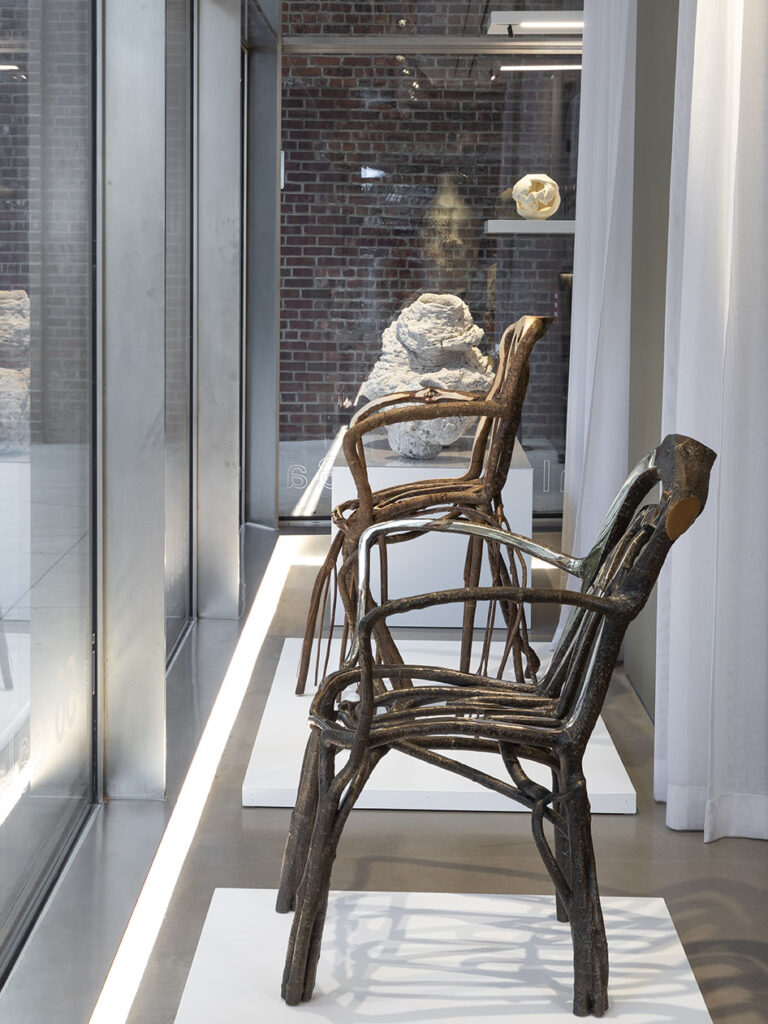
HOW DO CUSTOMERS REACT TO THE CONCEPT OF OWNING A PIECE OF FURNITURE THAT GREW FROM A TREE? DOES THE STORY BEHIND EACH PIECE PLAY A MAJOR ROLE IN ITS VALUE?
Customers are often captivated by the idea of owning a piece of furniture that embodies years of natural growth and care. The story of each piece—from sapling to chair—adds profound value, as it connects the owner with nature’s slow, patient processes. Our customers see these pieces not only as functional furniture but as works of art and symbols of sustainability. This narrative resonates with those who appreciate craftsmanship, exclusivity, and environmental stewardship.
SEVERAL NOTABLE MUSEUMS, INCLUDING THE NATIONAL MUSEUM OF SCOTLAND, HAVE PURCHASED FULL GROWN CHAIRS FOR THEIR PERMANENT COLLECTIONS. CAN YOU TELL OUR READERS A BIT ABOUT THOSE CHAIRS?
The Full Grown chairs featured in collections such as the National Museum of Scotland, San Francisco MOMA, and Musée des Arts Décoratifs in Paris are not just functional pieces but icons of our philosophy. Each chair is shaped over years, capturing the essence of natural growth and artistry. They symbolize a paradigm shift in design—moving away from conventional manufacturing to a harmonious collaboration with nature. These pieces have been recognized for their unique blend of art, function, and sustainability.
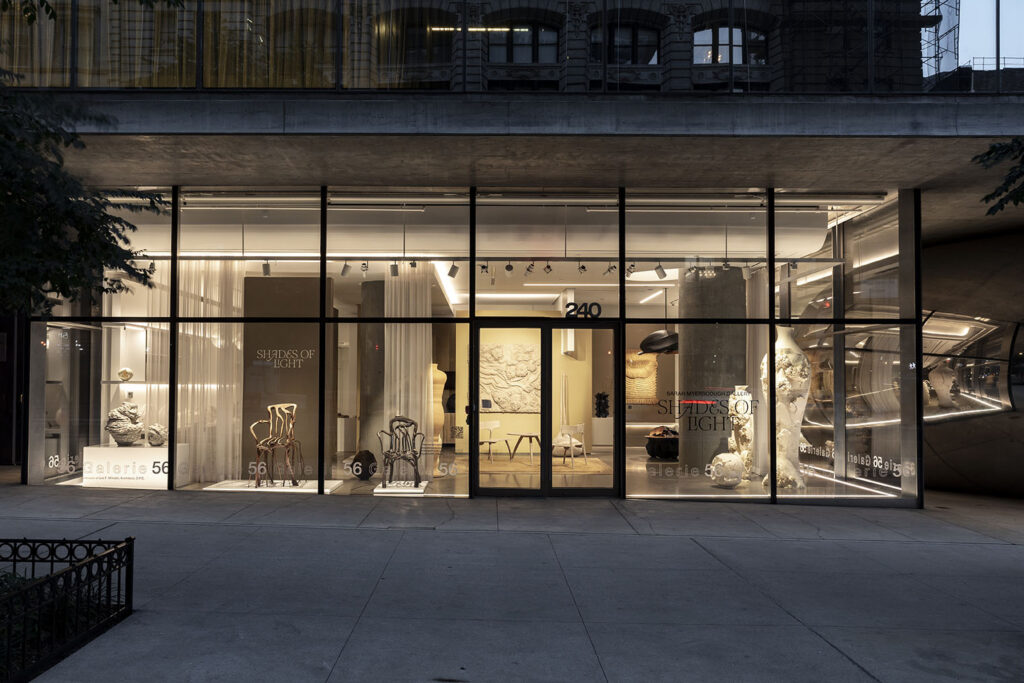
A NUMBER OF LUXURY BRANDS, INCLUDING LOUIS VUITTON, HAVE COLLABORATED WITH FULL GROWN IN RECENT YEARS. HOW DID THESE PARTNERSHIPS COME ABOUT, AND HOW HAVE THEY HELPED FULL GROWN TO ADVANCE ITS GOALS.
Collaborations with luxury brands like Louis Vuitton arose from shared values of craftsmanship and environmental responsibility. For instance, Full Grown’s RHS Gold Medal-winning display for Louis Vuitton’s Chelsea in Bloom highlighted the beauty of natural growth. These partnerships amplify our message, bringing our vision of sustainable design to a broader, global audience. Through these collaborations, we’re able to fund research, develop new techniques, and inspire others to adopt sustainable practices.
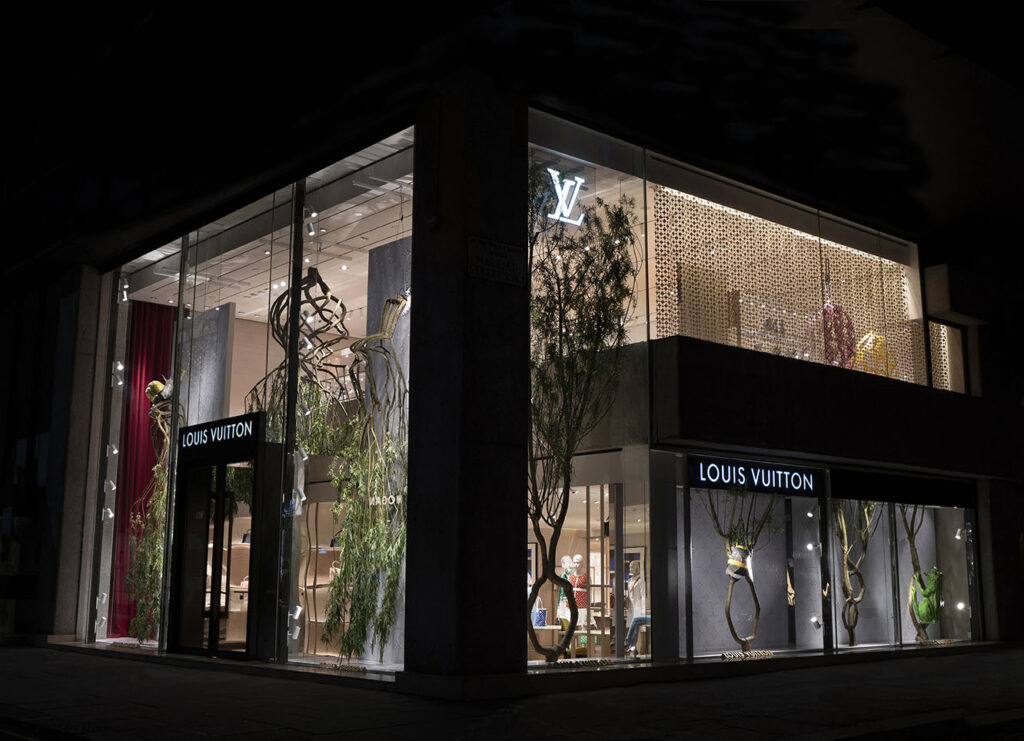
FINALLY, WHAT DO YOU HOPE YOUR COMPANY’S LEGACY WILL BE IN BOTH THE DESIGN WORLD AND THE WIDER CONVERSATION ABOUT SUSTAINABILITY?
We hope Full Grown’s legacy will be a testament to the possibilities of collaborating with nature. We envision a future where manufacturing harmonizes with ecosystems, where art and function merge in sustainable ways. Our ultimate aim is to inspire a re-evaluation of humanity’s relationship with the planet, encouraging others to see the beauty in working with nature rather than against it. Full Grown seeks to leave behind not only exquisite objects but a transformative vision for a flourishing planet.
edited by Melissa Sterry
